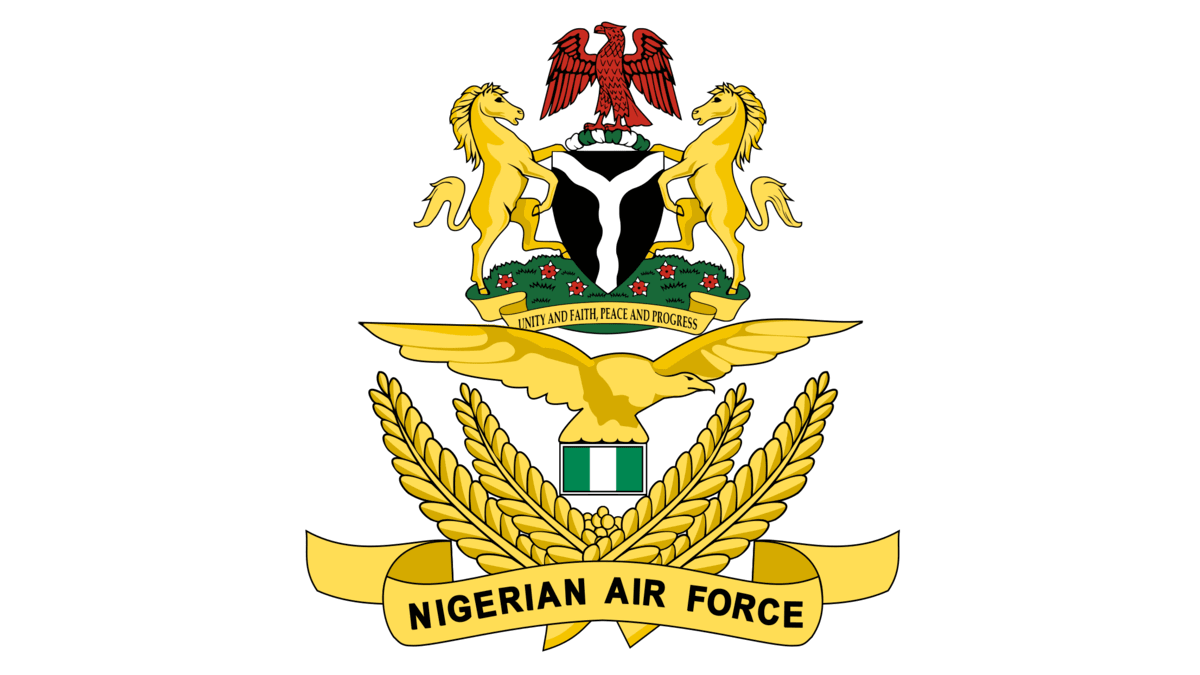Nigerian Air Force: History, Structure and Ranks
Nigerian Air Force is a military unit that provides defense and safeguarding of the airspace of Nigeria. It is one of the largest and best units in Africa.
The history of the Nigerian Air force is a rich and fascinating history that spans several decades, marked by significant milestones, and tragedies, and has been led by several competent leaders. In this blog post, we will delve into the history, structure, and ranks of the Nigerian Air Force.
Also, check out the Nigerian Air Force Recruitment Training.
Advertisement
Nigerian Air Force
The aerial combat division of the Nigerian Armed Forces is known as the Nigerian Air Force (NAF). The NAF initially existed as a modest auxiliary air unit with little to no equipment.
Presently, the story is different since the unit underwent considerable changes throughout the years that transformed it. We currently have a solid organization with a sizable manpower of both men and women making up the force.
The Nigerian Air Force’s main duties include conducting missions for national security and supporting other military forces, including the Nigerian Army. The NAF has been essential in Nigeria’s peacekeeping missions in addition to its military operations, providing aviation support to the UN and other international organizations.
History of Nigeria Air Force
The Nigerian Air Force was officially established on April 18, 1964, but activities and recruiting had been going on since June 1962. The only thing lacking at the time was the official ratification by the law.
As the recruits lacked prior expertise, the local training was unable to enhance their first preparation. Also, there was a lack of financing and very little equipment available.
To help the cadets internalize the core instruction, the NAF leadership and the Nigerian government request technical support from West Germany (German Airforce Assistance Group).
Advertisement
The technical and combat knowledge test was first made in 1967, at the height of the Civil War. The NAF was instrumental in the blockade of Biafra, which contributed to the conclusion of the war, as well as providing air support to the Nigerian Army during the fight.
Participation in international peacekeeping operations, such as the African Union Mission in Sudan, the United Nations Mission in Sierra Leone, and the United Nations Mission in Liberia, is one of the NAF’s noteworthy accomplishments.
In recent years, the NAF has undergone significant modernization and expansion, with the acquisition of new aircraft and equipment, and the establishment of new bases and training facilities. The air force has also been involved in several humanitarian operations, including the provision of aid and relief to victims of natural disasters such as floods and earthquakes.
Organizational Structure in Nigeria
Nigerian Air Force (NAF) is organized into several layers of command and administration, with each layer responsible for specific functions and tasks. The organizational structure of the NAF can be broken down into the following:
Headquarters
This is the highest level of command in the NAF and is responsible for the overall management and direction of the air force. It is headed by the Chief of the Air Staff (CAS) and has several departments responsible for different functions such as operations, logistics, training, and administration.
Commands
The NAF has four operational commands, each responsible for specific geographic areas and air force operations. They are:
- Tactical Air Command (TAC): responsible for air operations in the North-West and North-East regions of Nigeria.
- Mobility Command: responsible for air operations in the South-South and South-West regions of Nigeria.
- Training Command: responsible for the training of air force personnel.
- Logistics Command: responsible for the maintenance and supply of aircraft and equipment.
Bases
The NAF has several bases located throughout Nigeria, each responsible for specific air force operations. The bases are grouped under operational commands and are headed by a Base Commander.
Squadrons
The NAF has several squadrons, each consisting of a group of aircraft and personnel. The squadrons are responsible for specific air force operations such as air defense, ground attack, and transport
Units
The NAF has several specialized units responsible for functions such as air traffic control, intelligence, and security.
Also, check out The Nigerian Police Force Ranks and Symbols.
Ranks in Nigeria Air Force
As with any military, there are ranks to show position, authority, and responsibilities. In the Nigeria Airforce, we have ranks separating the superiors from the juniors. Following are the ranks and responsibilities peculiar to each rank.
Non-commissioned Officers
The first set of ranks is for the non-commissioned ranks in the Nigeria Air Force. Non-commissioned officers (NCOs) hold ranks that are below commissioned officers but above enlisted personnel.
- Aircraftman/ Woman. At this level, airmen and airwomen carry out duties such as cleaning, maintenance, and support.
- Lance Corporal: When you complete basic military training, the lance corporal is the rank you get
- Corporal: This rank is given to those who have proven their leadership abilities and supervisory abilities.
- Sergeant: Airmen and airwomen with this rank have demonstrated outstanding leadership and management skills.
- Flight Sergeant: An airman or airwoman assigned to this rank supervises a group of sergeants.
- Warrant Officer: A warrant officer is a senior noncommissioned officer in charge of training and mentoring junior officers and airmen. We have an Air Warrant officer and Master Warrant Officer.
Commissioned Officers
The commissioned ranks in the Nigeria Air Force include the following. Commissioned officers are the senior leaders and decision-makers in the NAF and are responsible for strategic planning, decision-making, and commanding personnel. The commissioned ranks in the Nigerian Air Force.
- Pilot Officer: This is the lowest commissioned officer rank in the NAF. Officers at this level are responsible for piloting aircraft and leading small groups of airmen.
- Flying Officer: Officers at this rank are responsible for leading larger groups of airmen and piloting more advanced aircraft.
- Squadron Leader: Officers at this rank are responsible for leading squadrons of aircraft and airmen.
- Wing Commander: This rank is assigned to officers who are responsible for managing groups of squadrons.
- Group Captain: This rank is assigned to officers who are responsible for managing groups of wings.
- Air Commodore: Officers at this rank manage a group of airbases.
- Air Vice Marshal: This rank is assigned to officers who are responsible for managing several airbases and air operations.
- Air Marshal: This rank is assigned to officers who are responsible for managing air force operations on a national level.
- Air Chief Marshal: This is the highest rank in the NAF. Officers at this level are responsible for the overall management and direction of the air force.
Insignia for Commission Ranks
The Nigerian Air Force has several ranks, each with its unique insignia. Here is a description of the insignia for the different commissioned ranks in the NAF.
- Air Chief Marshal: Air Chief Marshal of the Nigerian Air Force is the highest rank in the Nigerian Air Force, and the insignia is a winged eagle with four stars at the center.
- Air Marshal: The Air Marshal insignia is a winged eagle with three stars at the center.
- Air Vice Marshal: The Air Vice Marshal insignia is a winged eagle with two stars at the center.
- Air Commodore: The Air Commodore insignia is a winged eagle with one star at the center.
- Group Captain: The Group Captain Commodore insignia is a winged eagle with four bars below it.
- Wing Commander: The Wing Commander insignia is a winged eagle with three bars below it.
- Squadron Leader: The Squadron Leader insignia is a winged eagle with a single bar below it and a small loop at the bottom.
- Squadron Leader: The Squadron Leader insignia is a winged eagle with three bars below it. The bar in the middle is thinner compared to other bars.
- Flight Lieutenant: The Flight Lieutenant insignia is a winged eagle with two bars below it.
- Flying Officer: The Flying Officer insignia is a winged eagle with one bar below it.
- Pilot Officer: The Pilot Officer insignia is a winged eagle with a thin bar below it.
The non-commissioned ranks insignia symbols
- Aircraftman (AC) – A plain light blue roundel as their insignia.
- Lance Corporal – A plain light blue roundel with one upward-pointing chevron as their insignia.
- Corporal – A plain light blue roundel with chevrons as their insignia.
- Sergeant (Sgt) – A plain light blue roundel with three upward-pointing chevrons as their insignia.
- Flight Sergeant (FS) – A plain light blue roundel with a central circle and four upward-pointing chevrons as their insignia.
- Master Warrant Officer – A Nigerian Coat Of Arms, where the horses are silver and the rest is golden.
- Air Warrant Officer – A golden eagle surrounded by a matching golden crown made of olive leaves.
Conclusion
The hierarchy and degrees of power within the Nigerian Air Force are reflected in the ranking system that is in place. Airmen, non-commissioned officers, and commissioned officers make up the rank structure.
Junior officers, senior officers, and flag officers are the three divisions of commissioned officers. Airmen are divided into five ranks: aircraftman, leading aircraftman, senior aircraftman, senior aircraftman special, and aircraftman woman.
Non-commissioned officers are divided into three ranks: corporals, sergeants, and master sergeants.
Before you go, check out The Nigerian Army Ranks and Symbols.






